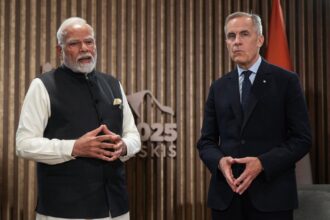In community arenas and fields across Canada, a complex ecosystem of youth sports flourishes, shaping not just athletic abilities but the very fabric of childhood development. Recent research from Sport Canada reveals that while 77% of Canadian children participate in organized sports, the landscape is shifting dramatically, with troubling patterns of early specialization, parental pressure, and economic barriers redefining what was once considered a cornerstone of Canadian identity.
“What we’re seeing today barely resembles the neighborhood pickup games that defined previous generations,” explains Dr. Melissa Thornton, sports psychology researcher at the University of Toronto. “The professionalization of youth sports has created a hyper-competitive environment where six-year-olds are expected to commit to single sports year-round, often at the expense of balanced development.”
This transformation is evident in communities nationwide. In suburban Kitchener-Waterloo, minor hockey registration fees now routinely exceed $3,000 per season for competitive levels—before accounting for equipment, travel, and private coaching. Meanwhile, Canada News investigations have found that families spend an average of 15 hours weekly shuttling between practices, games, and tournaments, creating what sociologists term “windshield families.”
The economic impact extends beyond individual households. The Canadian youth sports industry now generates approximately $8.7 billion annually, according to figures from the CO24 Business analysis team. This commercialization has fundamentally altered the experience for young athletes.
“Sports used to be where children learned to play together, resolve conflicts, and develop physical literacy,” says Carlos Menendez, long-time community coach and founder of Equal Play Initiative. “Now it’s become a pressure cooker where kids specialize too early, parents invest emotionally and financially in potential scholarships, and dropout rates skyrocket by age 13.”
The data supports Menendez’s observations. Statistics Canada reports that while 71% of children aged 5-10 participate in organized sports, that number plummets to 45% by ages 14-17. The decline is particularly pronounced among girls and youth from lower-income households.
Against this backdrop, innovative programs are emerging to counterbalance the high-pressure environment. The Play More initiative in Vancouver has established neighborhood sport hubs offering free, coach-facilitated play sessions where structure is minimal and enjoyment paramount. Similarly, Toronto’s Urban Sport Collective provides equipment libraries and sliding-scale registration fees to ensure accessibility.
“We need to reclaim the joy of movement,” argues Sophie Williams, physical literacy advocate and contributor to CO24 Politics. “Countries like Norway demonstrate alternative approaches, with their Children’s Rights in Sport declaration forbidding national rankings before age 13 and emphasizing participation over performance.”
Sport Canada has begun addressing these issues through its Long-Term Athlete Development model, which recommends multi-sport participation through childhood and delayed specialization. However, implementation remains inconsistent across sports organizations and regions.
The cultural shift extends beyond organizational policies. Parents increasingly report feeling pressured to provide elite opportunities for their children, fearing they might otherwise fall behind. This anxiety has spawned an entire industry of private coaches, specialized camps, and year-round training facilities catering to ever-younger athletes.
“We’ve created a system where families feel compelled to spend beyond their means to keep children competitive,” notes economist Patricia Delgado, who studies household spending patterns. “The opportunity cost is significant—finances diverted from education savings, family vacations, and other enrichment activities.”
As Canada confronts these challenges, the fundamental question emerges: what values should our youth sports culture prioritize? The answer will shape not just athletic development but the very nature of Canadian childhood in the decades to come. With rising concerns about youth mental health and physical activity levels, perhaps it’s time to reconsider whether our current approach truly serves the children it purports to benefit.























